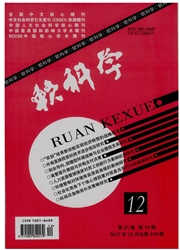

 中文摘要:
中文摘要:
基于弱可持续性标准的视角,使用DEA方法,测算了2010年中国26个省、自治区的282个地级城市和4个直辖市的环境资产转化效率,并对其影响因素进行分析.得到如下结论:无论是DEA还是SDEA,东部和西部城市的环境资产转化效率都要显著高于中部城市.在区域上表现为“两边高、中间低”.从环境资产转化效率的离散程度上看,西部大于中部、中部大于东部.从全国的角度看,影响环境资产转化效率的因素分别是城市规模和科研与教育支出,其中城市规模对环境资产转化效率的影响表现为“U”型曲线,科研与教育支出对环境资产转化效率的影响是正向的.影响环境资产转化效率的因素在区域上存在显著的差异.
 英文摘要:
英文摘要:
This paper, from the weak sustainability standard' s perspective, applies DEA model to measure the transforma- tion efficiency of environmental assets in 26 provinces and autonomous regions in China, 2010, including 282 prefecture-lev- el cities and 4 municipality directly under the central government, and to analyze its influence factors. Then, it comes to conclusions that: Firstly, for either DEA or SDEA, urban environmental assets transformation efficiency in the east and the west will be significantly higher than that of the central. In the region, it shows to be "higher on both sides, lower on the central". Secondly, from the dispersion of environmental assets transformation efficiency, the western is larger than the cen- tral and the central is larger than the eastern. Thirdly, from the whole country, the urban scale and R&D are main influen- cing factors of the environment assets transformation efficiency, and urban scale' influence shows " U" curve, while the effects of R&D on that is positive. Finally, there are significant differences about influencing factors in the region.
 同期刊论文项目
同期刊论文项目
 同项目期刊论文
同项目期刊论文
 期刊信息
期刊信息
